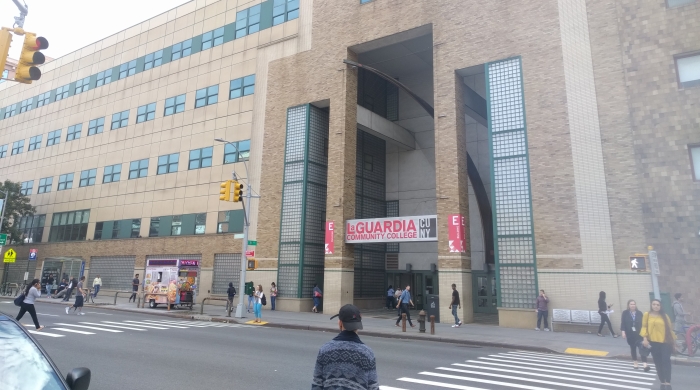By Norm Fruchter
From the 1970s to 2002, all the city’s schools including the alternative high schools operated within a partially decentralized citywide education governance structure. Locally elected school boards in 32 community school districts across the city were responsible for maintaining and supporting all elementary and middle schools and appointing district superintendents to manage district operations. The Central Board of Education was responsible for supervising and managing all the city system’s high schools, including the Alternative High School Superintendency, which grew to include more than 40 schools by the turn of the century.
Undoing decentralization: school system reorganization under Mayor Bloomberg
In 2001, Michael Bloomberg was elected mayor of New York City, and in 2002 the state legislature passed a law transforming the city school system into a municipal department under mayoral control. The new law abolished the thirty-two locally elected community school boards and ended their power to supervise the community school districts. In 2003 Mayor Bloomberg and Schools Chancellor Joel Klein began to restructure their newly transformed city school system on core principles of choice, autonomy and accountability. They targeted the city’s traditional high school sector, eventually closing some 150 large high schools and creating 400 small high schools to replace them. To provide citywide instructional supervision and operations support, the Bloomberg administration consolidated the school system into ten geographic regions. They also dissolved the high school sector’s supervisory structures, including the Alternative High School Superintendency. But the regional structure was soon scrapped and replaced by a series of efforts to develop school networks for supervision, management, and support.
The first of these networks was the Autonomy Zone, a pilot initiated in 2004. Twenty-nine school principals and the directors of three charter schools pledged to meet academic performance goals in exchange for the autonomy and power to make critical decisions at the school level. These decisions, about staffing, scheduling, curricula, instruction, and assessment, had traditionally been made by the central bureaucracy. In 2005 the Autonomy Zone, the city system’s first official network, grew to include forty-eight schools.
In 2006, Chancellor Klein expanded the opportunity to join the Autonomy Zone to all the system’s schools, and some 330 principals opted into the zone, which was renamed the Empowerment Schools Project. Participating principals formed networks of twenty-five schools and hired instructional leaders to guide their networks’ development. In 2007, Chancellor Klein dissolved what remained of the citywide regional structure, and the principals of all the system’s schools that had not joined the Empowerment Schools Project were directed to join one of the system’s three new networking infrastructures:
- the Empowerment Support Organization, a relabeling of the Empowerment Schools Project and the original Autonomy Zone;
- a group of Learning Support Organizations developed by the Department of Education (DOE) to offer assistance, support, and oversight to member networks of schools;
- a group of Partnership School Organizations managed by school reform nonprofits or universities, including the networks which eventually became the current Affinity District members.
School system reorganization under Mayor de Blasio
By 2010, all the system’s schools were reorganized into some fifty-five school networks providing both instructional and operations support. The DOE developed evaluation metrics to assess the networks’ efforts, a small number of networks were disbanded, and new networks were subsequently constituted. In 2015, midway through the first term of Mayor Bloomberg’s successor, Bill DeBlasio, Schools Chancellor Carmen Fariña dissolved almost all the school networks, reassigned schools to their original community districts, and restored many of the supervisory and instructional powers of the district superintendents. But while Fariña disbanded some of the Partnership Support Organizations’ networks, she allowed other networks to continue to support to their member schools. Those surviving networks evolved to become the current members of the DOE’s Affinity District.
Thus the Affinity District’s networks and member schools can trace their history back to the formation of the alternative high schools of the 1960s. Each Affinity District network has developed a specific design philosophy for how high schools should structure their teaching and learning, their curricula, the development and support of their teaching staff, their college and career preparation, and the formation of supportive school cultures to maximize the learning capacities of their students. Since almost all the sector’s 160 member schools are high schools, the Affinity District represents a unique multi-decade experiment in high school creation, development, and support.
Given this rich potential, the DOE should commission a research study that assesses the demographics – the particularities of the student population of each Affinity Group’s member schools and networks – as well as their performance outcomes. Such a study should provide critical information about the following questions:
- What can a demographic analysis of the Affinity Districts networks tell us about the characteristics of the student population served by each network? Do the Affinity District’s networks serve differing percentages of students by race/ethnicity and gender, poverty, homeless students, students with disabilities, and multi-lingual learners? How do each networks’ demographics compare to the city system’s overall demographics?
- What can an analysis of student performance outcomes tell us about what the Affinity District’s’ students, schools, and networks are achieving? Do school and network performance vary by student demographics – do some schools and networks serve some categories of students more (or less) effectively than others? How does each of the networks’ performance outcomes compare to the outcomes of the city system?
- Can variation in performance outcomes across networks be linked to the organizing philosophies and structural principles of each network? Can, for example, the way each network organizes curricula and instruction, teacher professional development and learning communities, assessment and accountability, school climate and social-emotional supports, and college and career preparation, be linked to variations in network performance outcomes?
- What can the research tell us about how the six networks structure their operations to most effectively lead, guide, and support their member schools so that their students graduate prepared to succeed in college and subsequent careers?
- What can the research tell us about how each of the six networks work collaboratively with and within the nation’s largest school system, as well as with its teacher and administrators’ unions? Unlike most charter management organizations, the six networks cannot supervise, hire, or terminate school staff. At best the networks offer knowledge, experience, and guidance, rather than wielding administrative authority. The networks must build the trust necessary to shape and support their staffs’ capacities and maximize collaboration with school system and union colleagues. How the networks have negotiated these critical tasks is part of a multi-decade story whose lessons are critical to school reformers.

Norm Fruchter is a senior consultant for the NYU Metro Center. He can be reached by email at: norm.fruchter@nyu.edu.
Related Articles
New York City’s Affinity District (Part 2): The Origins
The roots of the Affinity District lie in the 1960’s, a period of fierce ferment in U.S. public education.
New York City’s Affinity District (Part 1): What is it?
A late February (2020) posting highlighted the school system’s Affinity District, in which six education non-profits collaborate with the Dept of Education to support 160 high schools.



